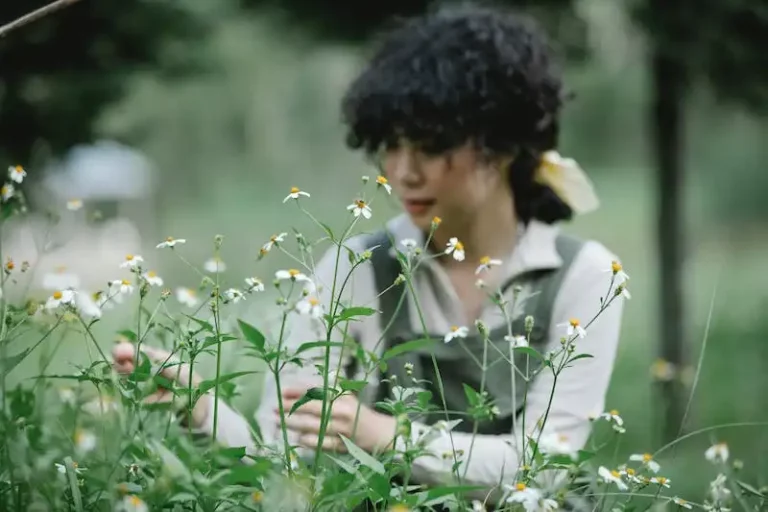Whether you’re a seasoned gardener or just starting out, Boston ferns are a must-have in any home. These plants thrive both indoors and outdoors, making them a great addition to any garden or living space. Although they’re known for their delicate and fluffy leaves, Boston ferns are surprisingly easy to care for and can bring a touch of elegance to any space.
One of the best things about Boston ferns is that they can be grown both inside and outside. They’re often called the ‘golden’ fern due to their vibrant green color and ‘massii’ variety, which is grown for its stunning ruffles. Boston ferns can be overwintered indoors, which is great news for those of us living in colder climates. Having these ferns in your home not only adds a touch of beauty, but also helps to purify the air. According to the USDA guide, Boston ferns are even better at removing toxins from the air than some other popular indoor plants.
When it comes to caring for Boston ferns, there are a few key things to keep in mind. First, they prefer a moist and humid environment. That means giving them a light shower in the morning or placing a tray of water near their base can help create the ultimate growing conditions. Second, Boston ferns love filtered sunlight. While they can tolerate some direct sun, it’s best to place them in a shady spot, such as ‘Dallas’ or ‘Fluffy Ruffles,’ to protect their delicate leaves from scorching. Pruning is also important to keep your fern looking its best. Remove any yellow or dead fronds to encourage new growth and maintain its shape.
If you’re planning to plant your Boston fern outdoors, make sure to choose an area with well-drained soil. Adding some mulch around the base of the plant can help retain moisture and keep the soil evenly moist. Boston ferns are also known to be relatively pest-free, but keep an eye out for any signs of infestation. If you notice any problems, treat the plant lightly with a natural pest control solution.
So, whether you’re looking to enhance your indoor space or add some greenery to your outdoor gardens, Boston ferns are an excellent choice. With their stunning foliage, low-maintenance nature, and air-purifying qualities, these ferns are sure to make you and your plants happy.
Boston Fern Outdoors: Can A Boston Fern Be Grown Outside
If you’re a fan of the stunning Boston Fern and you’re wondering whether it can be grown outdoors, you’re in luck! Boston Ferns can indeed be grown outside, making them an ideal addition to your outdoor garden or landscape.
One important thing to note is that Boston Ferns thrive in shady and moist conditions, so you’ll want to carefully choose the location for your outdoor fern. Look for a spot in your garden that receives morning sunlight but is shaded for the rest of the day. This will ensure that your fern gets the ideal amount of light without being exposed to too much direct sun.
When planting your Boston Fern outdoors, it’s important to prepare the soil properly. Start by digging a hole that is slightly larger than the root ball of the fern. Gently remove the fern from its container and place it in the hole, making sure that the base of the plant is level with the ground. Fill in the hole with soil, making sure to press it down firmly around the base of the fern to secure it in place.
Boston Ferns require regular waterings to keep the soil moist. During dry periods, you may need to water your fern more frequently. It’s important to water your fern deeply, making sure that the soil is saturated. Avoid watering the fern from above, as this can cause diseases and problems with the fern’s growth. Instead, use a hose or watering can to water the base of the plant, allowing the water to soak into the soil.
In addition to regular waterings, Boston Ferns also benefit from regular fertilization. Use a water-soluble fertilizer formulated for ferns and apply it according to the package instructions. Fertilize your fern every four to six weeks during the growing season to promote healthy growth and stunning foliage. Remember to follow the instructions carefully, as over-fertilization can harm the fern.
In terms of winter care, Boston Ferns are not frost-tolerant and should be brought indoors when temperatures drop. If you live in a USDA Zone that experiences freezing temperatures in the winter, it’s best to bring your fern inside or provide extra protection, such as covering it with a plastic greenhouse or a frost cover. This will help to protect the fern from cold temperatures and prevent damage to the delicate foliage.
Overall, Boston Ferns can be successfully grown outdoors, as long as you provide them with the right conditions and care. With their beautiful, feathery fronds and love for shade and moisture, they can be a stunning addition to any garden or landscape. Follow this guide and enjoy the beauty of Boston Ferns in your outdoor space!
Can a Boston Fern be Grown Outside
When it comes to growing Boston ferns, they are most commonly known and loved as indoor plants. However, the idea of growing these stunning ferns outdoors is also possible. Although they thrive best in indoor environments, it is likely that they can survive and even thrive in the right outdoor conditions.
If you have decided to try growing Boston ferns outdoors, there are a few important things you should know. Firstly, Boston ferns need filtered sunlight to grow well. Placing them under a tree or in a shady spot in your garden would be ideal. Direct sunlight can scorch the leaves and cause damage to the plant.
Another important consideration is the temperature. Boston ferns are native to tropical forests, so they prefer warm and humid climates. They should be planted outdoors during the warm months and brought indoors once the temperature starts to drop. In cooler climates, Boston ferns can be grown as an annual plant or you can overwinter them indoors to protect them from frost or freezing temperatures.
When it comes to watering, Boston ferns like to be evenly moist. They can’t tolerate overwatering, so make sure to water them enough but avoid soggy soil. One useful watering tip is to water them in the morning. This allows the excess moisture on the leaves to dry before evening, reducing the risk of fungal diseases.
Like any plant, Boston ferns are also susceptible to pests. Whiteflies can be a common problem for these ferns. Keep an eye out for these tiny white insects and take necessary steps to control their population, such as using insecticidal soap or neem oil.
When it comes to pruning, Boston ferns are relatively low maintenance. However, if you notice any dead or yellowing fronds, you can prune them off to promote new growth. Pruning can be done throughout the year, but it is recommended to do a more extensive pruning in early spring.
Overall, while Boston ferns are typically grown as indoor plants, they can also be successfully grown outdoors with proper care and attention. With the ultimate goal of keeping your Boston ferns happy and healthy, following these tips and guidelines will help you achieve a bigger and better fern in your garden. Don’t forget to watch out for encroaching plants or any other factors that may affect the growth of your Boston ferns.
Boston Fern Outdoor Care
When it comes to Boston Ferns, they thrive best when grown outdoors. However, proper care is essential to ensure their health and longevity. Follow this guide to learn how to provide the right outdoor care for your Boston Ferns.
Soil: Boston Ferns prefer well-draining soil that is rich in organic matter. Make sure to prepare the soil by adding compost or leaf mold to improve its fertility and drainage.
Moisture: These ferns love moisture, so it’s important to keep the soil consistently moist, especially during hot summer months. Avoid overwatering, as this can lead to root rot. In addition, make sure the pots have drainage holes to prevent waterlogging.
Light: Boston Ferns prefer bright, indirect light, but can tolerate some morning sun. They thrive in shaded areas, making them an ideal choice for gardens with partial shade. However, avoid direct afternoon sun, as it can burn the delicate fronds.
Temperature: Boston Ferns are native to tropical regions and thrive in warm environments. They can tolerate temperatures as low as 50 degrees Fahrenheit (10 degrees Celsius) but prefer temperatures between 60-75 degrees Fahrenheit (15-24 degrees Celsius).
Pruning: Regular pruning is essential to keep Boston Ferns healthy and prevent encroaching fronds. Remove any yellow or dead leaves, as they can attract pests and diseases. Use sharp, clean tools and make cuts at a 45-degree angle.
Fertilizer: Boston Ferns benefit from regular feeding during the growing season. Apply a balanced, water-soluble fertilizer every two weeks from spring to fall. Dilute the fertilizer to half the recommended strength to avoid overfeeding.
Mulch: Applying a layer of organic mulch around the base of the ferns will help conserve moisture and suppress weed growth. Use materials like wood chips, straw, or leaf litter, but keep the mulch away from the ferns’ crowns to prevent rot.
Pest and Disease Control: Keep an eye out for common pests like mealybugs, scale insects, and spider mites. Treat infestations promptly with insecticidal soap or horticultural oil. Fungal diseases can also be a problem, especially in humid environments. Maintain good air circulation and avoid overhead watering to prevent these issues.
Winter Care: In regions with freezing winter temperatures, Boston Ferns are not cold-hardy and should be moved indoors. Before bringing them inside, inspect the plants for pests or diseases. Place the ferns in a cool, bright location away from drafts and heating vents. Water sparingly during winter, allowing the soil to dry slightly between waterings.
In summary, Boston Ferns require well-draining soil, consistent moisture, and partial shade. They can be prone to pests and diseases if not properly cared for, so regular monitoring is essential. By following these outdoor care tips, you can enjoy the beauty of Boston Ferns in your garden or outdoor spaces.
| Light | Temperature | Watering | Pruning |
|---|---|---|---|
| Bright, indirect light | 60-75 degrees Fahrenheit (15-24 degrees Celsius) | Consistent moisture, avoiding overwatering | Regular pruning to remove yellow or dead leaves |




